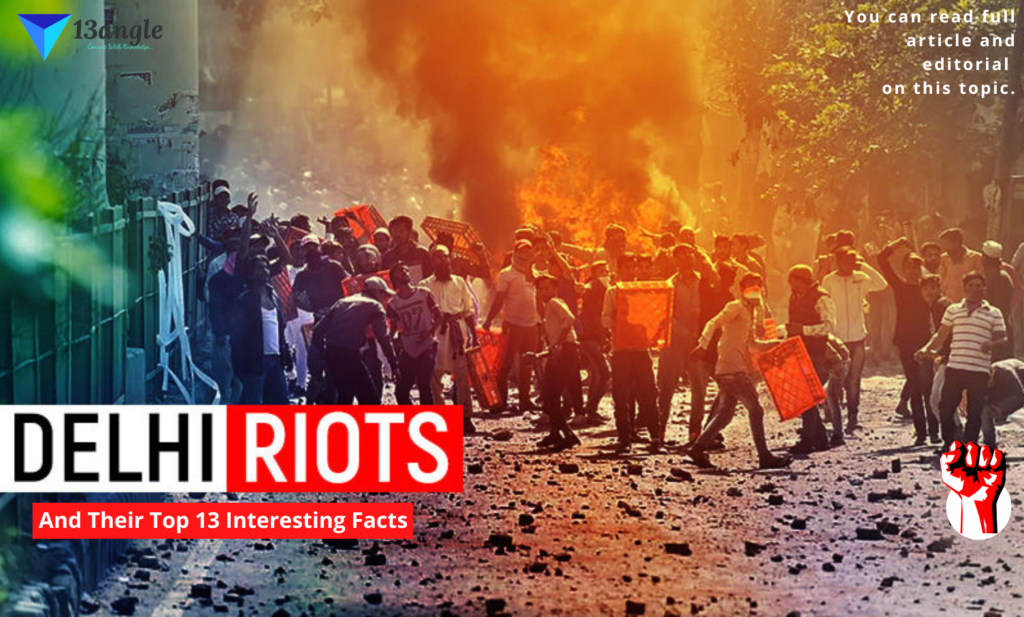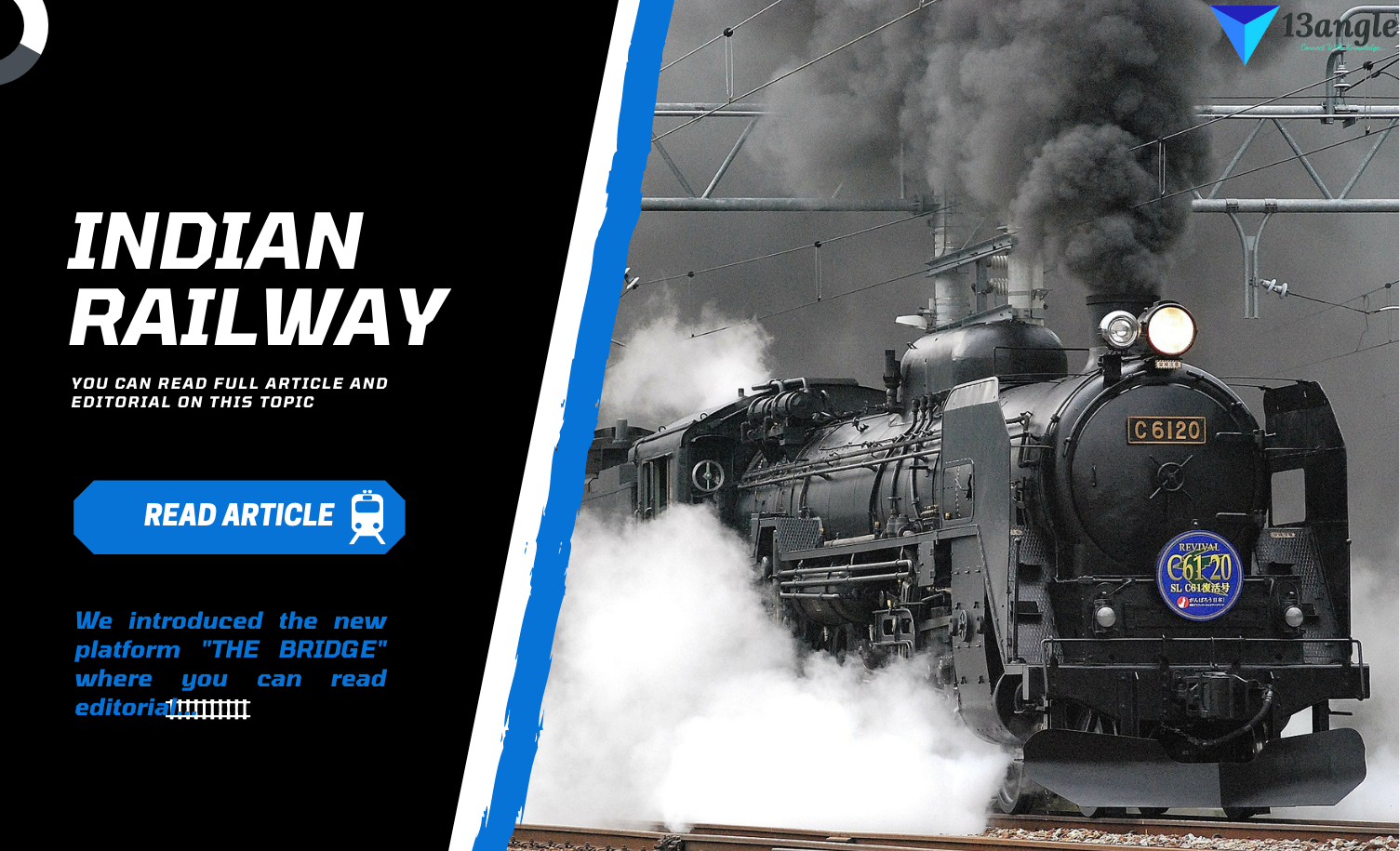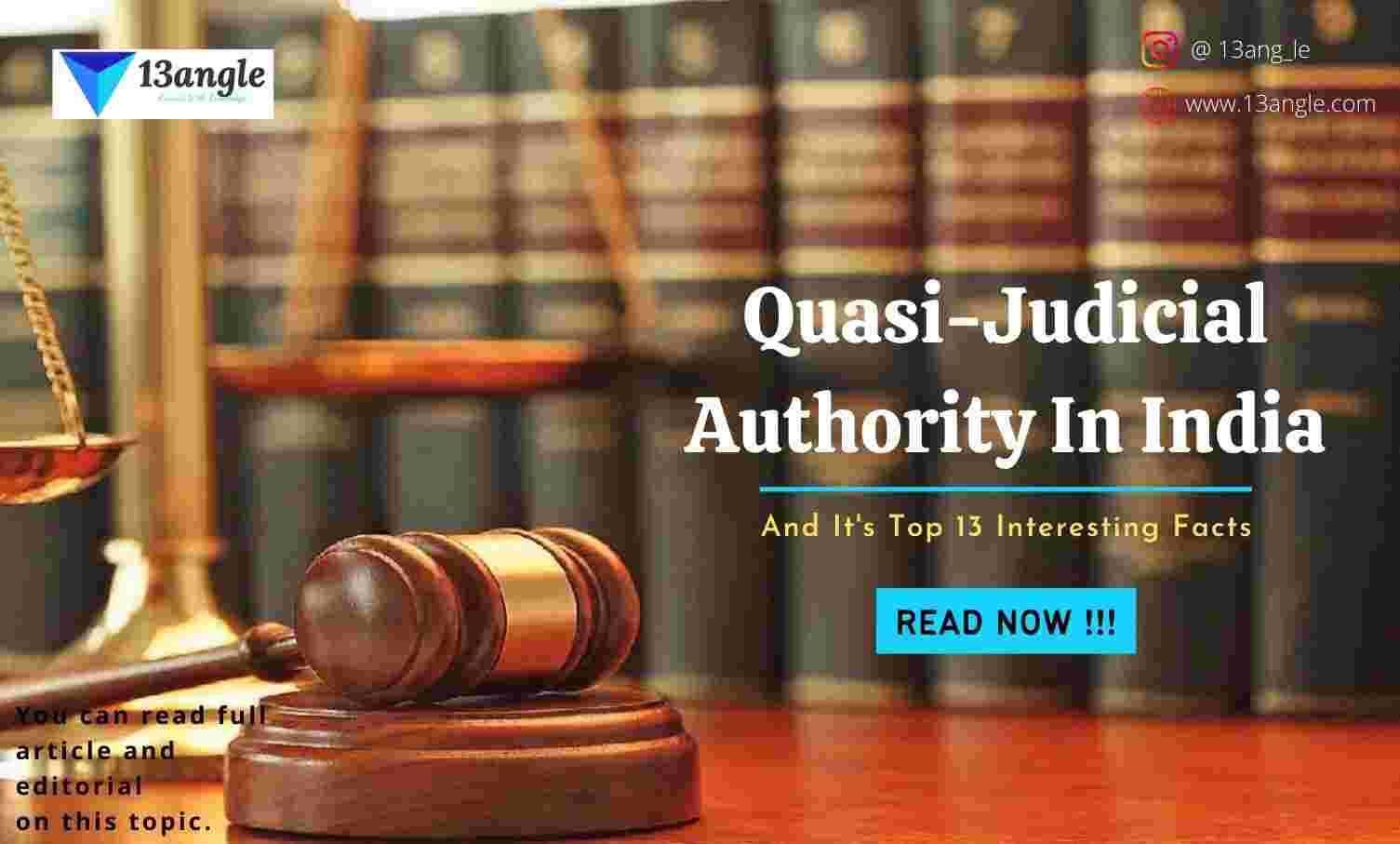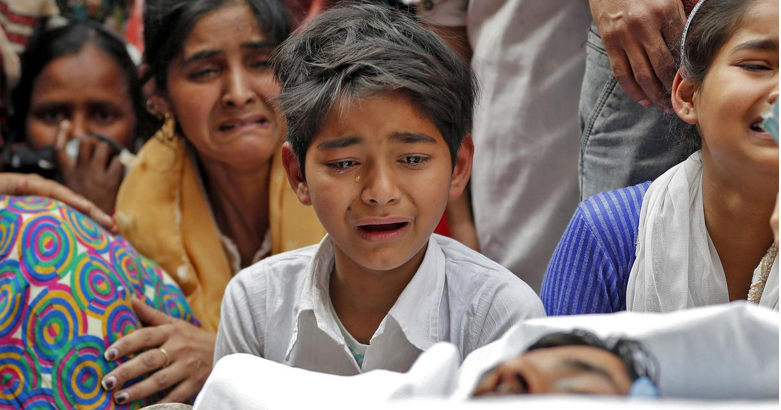
Introduction
The North East Delhi riots commonly known as the 2020 Delhi riots were penned as one of the cryptic periods in Indian History in which there was seen multiple waves of bloodshed of innocent people including small children and pregnant women’s, the private as well as public properties were annihilated and there was a sight of fear and terror in all over India. The rioting in North East Delhi actually began on 23 February 2020 and was caused chiefly by the Hindu mobs attacking the Muslims. The main cause for the riot was the CAA protest and hence was between Anti-Citizenship Amendment Act (CAA) and pro-CAA protestors. The protest took a communal turn and led to the death of over 53 people over the course of only 10 days in which more than 200 people were left severely injured. Along with this several shops and houses were burnt down into ashes and even places of worship were attacked. According to the reports out of the mentioned death of 53people, two-thirds of them were Muslims who were shot, slashed with repeated blows and some were even set on fire.
The dead also included an on-duty policeman, an intelligence officer, and over a dozen Hindus, who were shot or assaulted during the riot. Not more than a week after the violence had ended, hundreds of wounded people were languishing in inadequately staffed medical facilities, and many corpses were being found in open drains in the city.
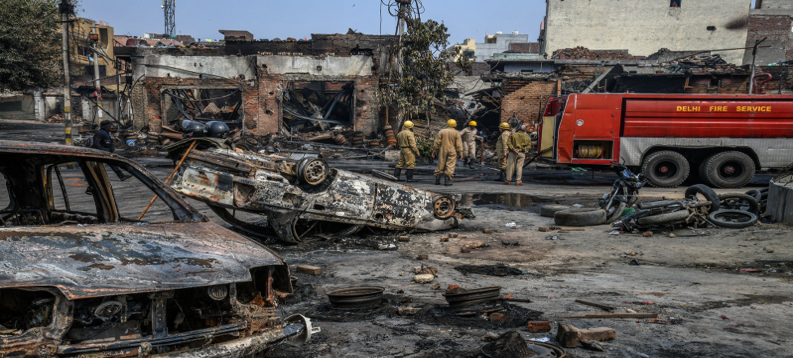
Therefore, by the end of February many people especially the Muslims left their neighborhoods in these riots-affected areas and even in those areas which were left untouched by the violence. They left for their ancestral villages due to fear and to ensure their personal safety in India’s capital.
According to the news reports, most of the properties which were destroyed in the riots were disproportionately owned by Muslim individuals and also included four mosques that were set ablaze by the rioters. It was also seen that till mid-March many Muslims remained missing even after the riot was over.
Background
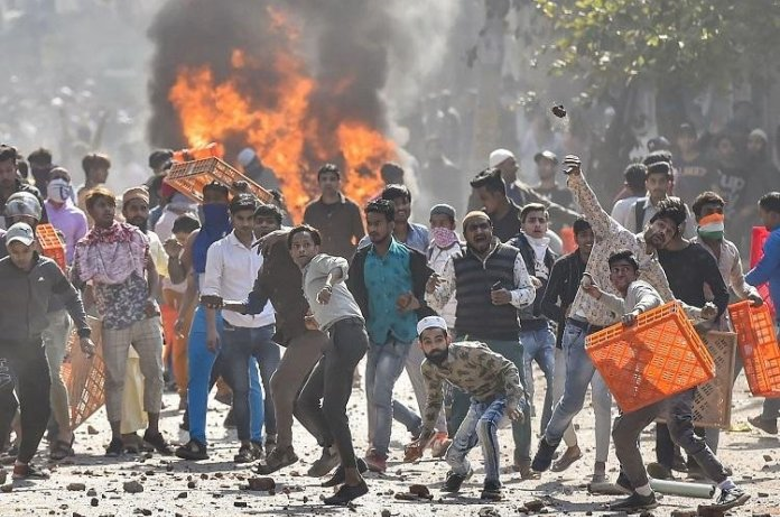
The Protests in Delhi began across India in December 2019 which was mainly caused due to the reaction of the public with respect to the Citizenship (Amendment) Act (CAA), this act was basically stating provisions about how the government is implementing the fast-tracked naturalization for immigrants from Pakistan, Bangladesh and Afghanistan belonging to six religions vis-à-vis Hinduism, Sikhism, Christianity, Zoroastrianism, Jainism, and Buddhism. This Act has been considered discriminatory by the Muslims and they were of the opinion that this is a threat to their existence in India when combined with the anticipated National Register of Citizens (NRC).
As a result, several anti-CAA protests were held in New Delhi in which some protesters even burned vehicles and pelted stones at security forces when they try to stop them. Along with this, there was a sit-in protest by Muslim women’s which was held in Shaheen Bagh where the protesters blocked the roads which ultimately led to traffic jams and caused problems to the commuters.
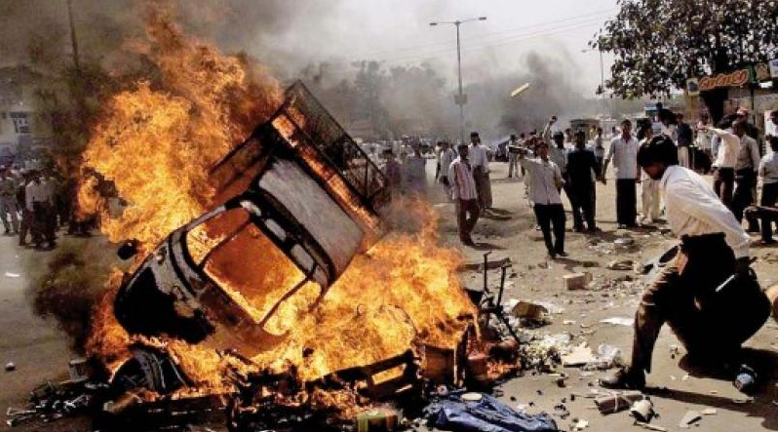
Along with the CAA protest, one major cause for the protest was the instigation by the political leaders as during this period the Delhi Legislative Assembly election was held on around 8 February 2020, in which Bharatiya Janata Party (BJP) was defeated by the Aam Admi Party. This caused a widespread usage of incendiary slogans by BJP supporters who were equating the protesters with the anti-national elements of the country and were demanding to shoot them.
The situation worsened on 22 February when around 500 to 1,000 protesters including women began a sit-in protest near the Jaffrabad metro station. This protest blocked a stretch of Seelampur–Jaffrabad–Maujpur road as well as the entry and exit to the metro station. According to the protesters, the sit-in was in solidarity with the Bharat Bandh called by the Bhim Army, which was scheduled to begin on 23 February. Therefore, to avoid any violence and fight the police and paramilitary personnel was deployed at the site to have control over the situation.
Causes Of The Riot
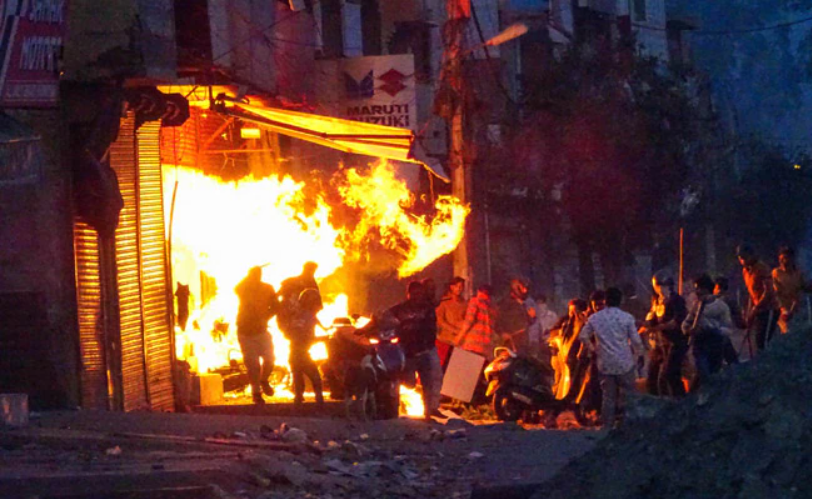
The major reason why the protest turned into such a dreadful riot was as follows: –
1. Anti-CAA protests: The main reason for the Protests which began in Delhi and other parts of the country during December 2019 was in response to the passage of the Citizenship Bill, which paved the way for granting citizenship to Hindus, Sikhs, Parsis, Jains, Buddhists, and Christians who took refuge in Pakistan, Bangladesh, and Afghanistan in or before the month of December in the year 2014. But the problem arose when this Act was seen by the protestors as a discriminatory act to the Muslim community and was threatening their existence in India when combined with the National Register of Citizens (NRC). Therefore, to show their anger and unacceptance of this act the Muslim personnel demonstrated several rallies and protests which were held in cities like Delhi, Mumbai, Hyderabad, Lucknow, Aligarh, Bengaluru, Kolkata, and many other parts of the country. In this most of the protests which were held were peaceful in nature, but along with such peaceful protest, there were also seen such rally which barred many incidents of stone-pelting and burning of vehicles during the protest.
One among such peaceful protests was the protest which was seen in Delhi’s Shaheen Bagh, which was mostly led by the Muslim women who endured the national capital’s biting cold. This drew a lot of attention of the public and was in highlights at that time especially before the Delhi Assembly election of February 2020 as it was seen the first time, such protest by Muslim women in Indian history and thus became a symbol of women-led anti-CAA protests across the country. However, even though their demonstration was peaceful in nature it caused road blockage in that area which was causing much discomfort to the commuters who used to travel by that road and even other people who were using that road for traveling purposes.
2. The 2019 Attack on Jamia Millia Islamia students by the police personnel’s: On 15 December when several students of Jamia Millia Islamia University were injured during a confrontation with the Delhi police, it spread a fire of anger among the students and was thus another major reason for the violence in Delhi. It all started when hundreds of police officers allegedly entered the college campus forcefully and detained more than a hundred students for no specified reason. This attack on students had triggered a national wide protest as it was alleged that the police officer has used batons and tear gas on students by giving excuses that such ways were used in order to disperse the anti-CAA protesters. As a result, it was seen that around 200 people were reported injured and were admitted to Delhi’s All-India Institute of Medical Sciences (AIIMS) and Holy Family Hospital. The Human Rights Watch urged India to launch a probe for the attack.
3. The Delhi Assembly election 2020: In the run-up to the Delhi elections which were held on 8 of February, in which the BJP were defeated comprehensively by the Aam Aadmi Party led by Arvind Kejriwal. It was noticed that several political leaders, especially leaders from the Bharatiya Janata Party (BJP) were seen using incendiary slogans which were equating protesters to anti-national elements and were also instigating in nature. Statements like “…Goli Maaro… (Shoot the traitors)” were raised during the election rally of Union Minister Anurag Thakur. Not only this, even the BJP MP Parvesh Verma said on video that the protesters at Shaheen Bagh would “enter your homes and rape your daughters and sisters”, which was too offensive in nature. Along with this BJP leader, Kapil Mishra posted in one of his communal tweets on Twitter that “Pakistan has entered Shaheen Bagh and that Mini-Pakistan is being created in the city. In addition to this, he also wrote that the law of the land is not being followed in Shaheen Bagh, Chand Bagh, and Indralok and that Pakistani rioters are occupying such Delhi roads,”.
Other than this one another reason on which the Delhi police were highly criticized and questioned was their inability to maintain the law and order during that period. This was the hot topic of that time and was questioned from time to time by multiple sources that why the Delhi Police wasn’t able to bring back the peace in the riot-affected areas. There were even reports stating that policies took no action despite being present at the time when the violence was being resulted in murders. They were said to have remained lax in deploying personnel even when intelligence reports called for more forces to prevent the tense situation from escalating furthermore.
According to the media reports, one video was shared on social media on February 26 which clearly showed a group of men being assaulted by the police as they lay on the ground and were forced to sing the national anthem and “Vande Mataram” by the policemen. The families of these men claimed that they were detained in the lockup for two days and were beaten further. Mohammad Faizan, one among them was admitted to the neurosurgery wing of LNJP Hospital and he eventually died on 29 February from critical gunshot wounds. Another one was reported to have suffered from serious injuries.
Thus, the Delhi High Court Bench advised Delhi Police to take a conscientious call about filing the FIRs against people whose speeches triggered the riots and take strict action against them accordingly. But the police and the government personnel’s arresting them had no such effect and was not restoring immediate peace in that scenario the court was informed that the police would need more time to investigate the matter in detail and then only any legal action will be taken with respect to the offender.
Reactions Of Other Countries Over The Delhi Riots
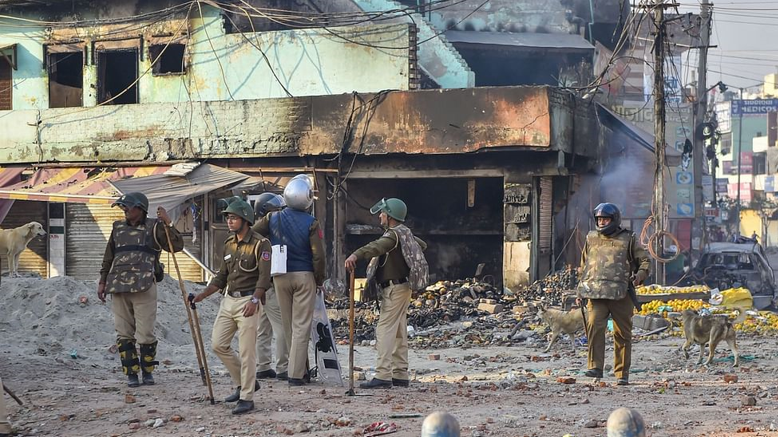
The US Commission of International Religious Freedom (USCIRF) on 26 February broke his silence and expressed their concern over the riots and requested India to give protection to the people living in the affected areas and not to discriminate against them on what faith or religion they belonged to.
Bernie Sanders who was a 2020 US presidential candidate and along with him some other US politicians also expressed their concerns over this event.
The United Nations High Commissioner for Human Rights stated in one of his posts that “Indians in huge numbers belonging from all communities have expressed their disapproval initially in a very peaceful manner through their sit-in protests which were done to show their opposition to the Act (CAA) and tried to support the country’s long tradition of secularism which is been following from time immemorial “. So, it should be followed in a peaceful manner only and all such people who are using this protest for their personal benefits should be punished.
On one hand, where different countries showed their concern and gave the Indian government solutions to have control over the situation, there were some countries who criticized the way the Indian government dealt with the situation and even questioned their actions.
One of them was Turkey President Erdogan who on February 27, answer the reporter in an interview by saying that “India right now has become a country where massacres are widespread. What massacres? Massacres of Muslims. By who? Hindus”. when asked to speak about the riot situation in India.
Along with him, Iranian Supreme Leader Ayatollah Ali Khamenei on March 5 questioned the Indian government and asked them to confront the extremist Hindus and their parties to stop the massacre of Muslims of India in order to prevent India’s isolation from the world of Islam.
This was not the end to the criticism as on March 3, the Delhi riots attracted heavy criticism from various members of Parliament from the House of Commons of the United Kingdom as they criticized the Modi government on the Delhi communal violence and CAA protest.
Political Reactions With Respect To Such Riots
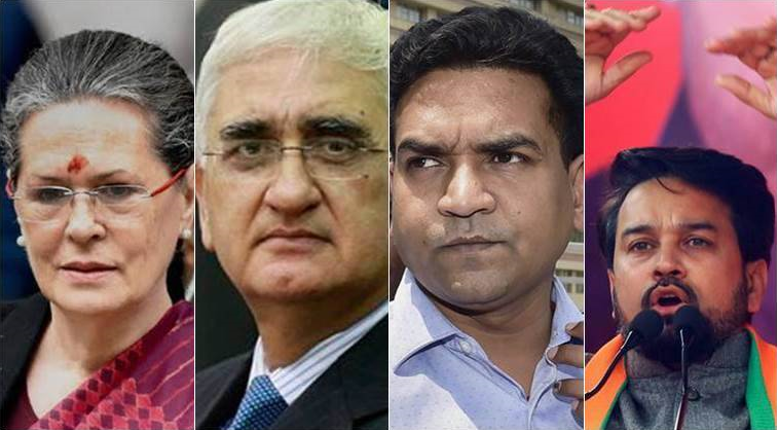
Delhi CM Kejriwal said in one of his interviews that despite all the efforts made by the police, they were unable to control the violence and therefore he also requested the Army’s help by the government to have an upper hand on these riots.
Sonia Gandhi, the congress president questioned the action of Home Minister Amit Shah and also asked him to give resignation from his post as they failed as a minister by not able to stop the violence at such crucial time. With this she further asked Government to do something by either additional force or by way of deployment of security forces.
It was seen that after three days from the date when violence broke out, PM Modi tweeted in one of his posts on Twitter in which he asked people to have patience and be calm in this situation and to also maintain peace and brotherhood in the country. While Home Minister Shah had not said anything on the riots during that period.
On 2 March, West Bengal Chief Minister Mamata Banerjee alleged that Delhi riot were “planned genocide” and was done by the ruling party at the Centre.
Along with this politician Tamil superstar, Rajinikanth also lashed out at the central government over the violence that happened in Delhi as he said that such riots should have been dealt with an iron fist and should have gained control over the situation a long time ago.
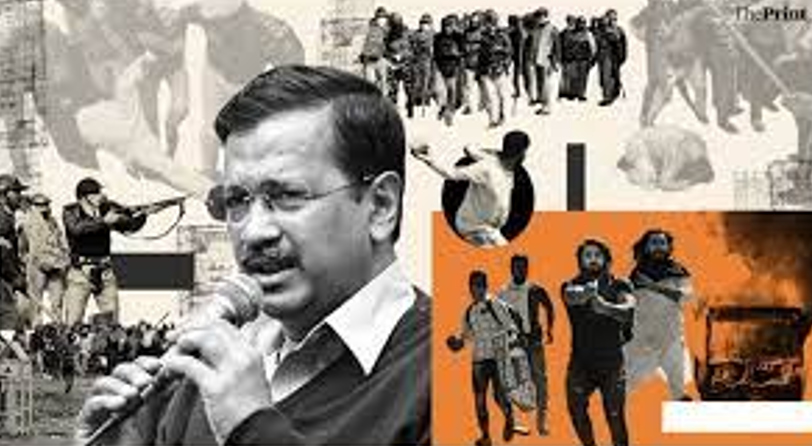
The actor also opined those protests should not turn into a communal riot and recalled his earlier statement and said that he will stand by Muslims if they were affected by the amended citizenship law. He also clearly showed his disapproval by stating in his interview in Chennai that – “Definitely it is Central government’s intelligence failure. I strongly condemn the Central government with respect to this topic “.
Seeing all this a Home Ministry’s meeting was held on 25 February morning in which the Chief Minister of Delhi Arvind Kejriwal chaired an urgent meeting of all MLAs from the violence-hit areas and some other senior officials to take strict action in order to have control over the situation. In the meeting according to the reports, several MLAs raised concerns about the lack of deployment of enough policemen in the riot-affected areas. These concerns discussed in the meeting were further raised by Kejriwal in the subsequent meeting which was being chaired by Home Minister Amit Shah in which officials person like Delhi Lieutenant-Governor Anil Baijal and senior police officials were also present. After having a brief discussion on all the concerned points the meeting was concluded with the decision to take all the possible steps to contain the violence in the northeastern parts of Delhi especially in the areas like Shaheen Bagh and so on. After the meeting, Arvind Kejriwal stated to the reporters that home minister Amit Shah had assured the availability of an adequate number of policemen to avoid any damage and disturbance in terms of peace to the public. With respect to this the National Security Advisor, Ajit Doval was given the responsibility of restoring peace in the affected region. Therefore, on 26 February, Doval traveled to the violence-hit regions and spoke to local persons, and assured them about the normalcy in the situation.
Relief Provided To Victims Of Delhi Riots
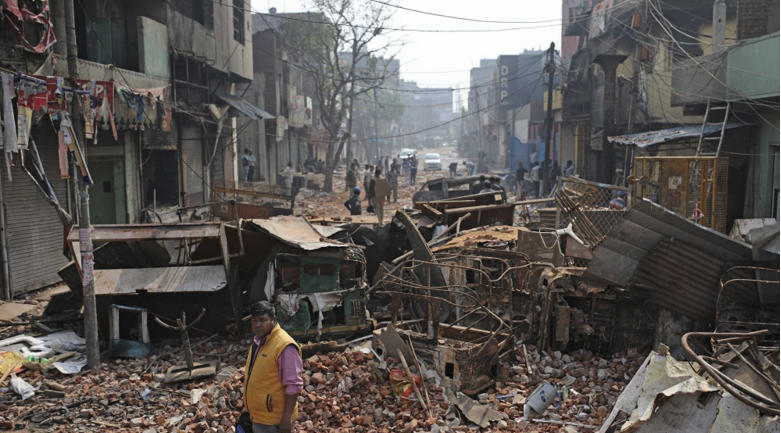
On February 27, Kejriwal announced free treatment for the injured in a government hospitals as well as private hospitals under the Farishta scheme.
The government also had made arrangements with the help of NGOs to supply food in areas where a curfew had been imposed and set up shelters for the needy ones. And also announced a compensation amount of Rs 10 lakh to affected people, Rs 1 lakh to ex-gratia, and Rs 5 lakh in the case of death of a minor.
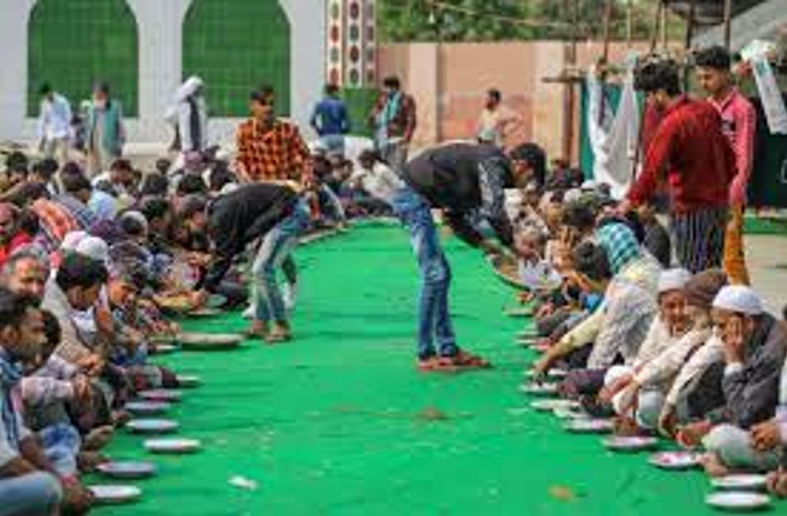
Along with this the Delhi government also announced that they had set up around nine shelters for the people affected by the riots.
Delhi police also released two helpline numbers – 011-22829334, 22829335 – for people to reach out to them during this distress.
Food and other relief materials were distributed with the help of resident welfare associations and NGOs. BJP leaders Tajinder Bagga and Kapil Mishra collected ₹7.1 million for the Hindu victims of the Delhi riots via crowdfunding.
Loopholes While Handling The Situation By Emergency Services
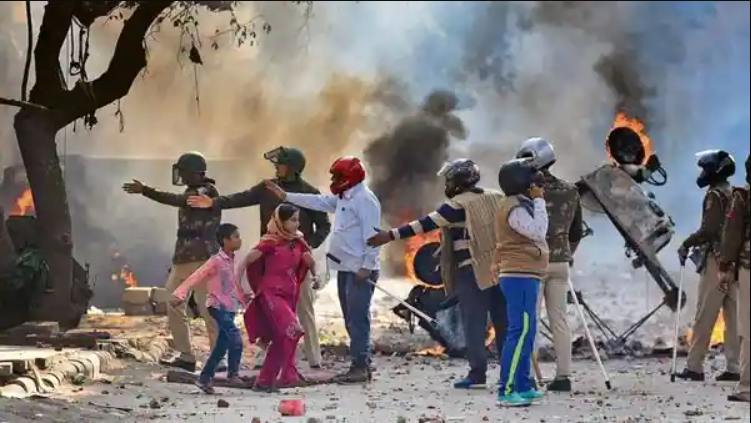
1. Delhi Police
The ability of Delhi police in order to maintain the law and order is always being questioned from time to time and with respect to bringing back the peace in the riot-affected areas were being in highlight at that time by multiple sources again as there was seen no such strict action taken by the police even when the police officer was present when the violence turned into tones of murders. Even though when multiple intelligence reports requested more armed forces to prevent the tense situation from escalating further, they remained lax in deploying more policemen on 23 February.
Victims of the riot clearly mentioned that the police did not respond promptly when called by claiming that the officers were busy and won’t be able to come. Other reports also suggested that the police encouraged rioters and even physically attacked the residents of the riot-affected areas as they were just randomly shooting on people. The police commissioner however denied all such assertions.
One of the major reasons for such a lack of police force was the deployment of force in order to line the roads for the visit of the United States President Donald Trump. Although the police officer had repeatedly informed the Ministry of Home Affairs about the shortfall of policemen for the immediate control of the violence, this was denied by the Ministry.
In this context when the Delhi High Court bench, on 27 February ordered the Delhi Police to file FIRs against the people whose speeches triggered the riots, the police and the government remarked that they made had consciously not done so and therefore arresting them would not restore any peace. And they further informed the court that they would need more time to investigate this matter from all points of view.
This worsen when a team of lawyers visited the Jagatpuri police station to visit the anti-CAA protestors but they were detained by the police and were reportedly abused by police personnel for no reason. The lawyers once when freed wrote to the Delhi police commissioner a letter and demanded strict actions to be taken against the officer who assaulted them.
After seeing such misuse of power by the police officer, on 27 February two Special Investigation Teams (SIT) had been formed to investigate the violence. in which DCP Joy Tirkey and DCP Rajesh Deo were appointed as the head office of these SITs respectively along with four other Assistant Commissioners in each team respectively. Also, additional Commissioner of the crime branch, B.K. Singh was announced to be supervising the work of these SITs.
2. Delhi Health Services
The Jan Swasthya Abhiyaan (JSA), a public health advocacy group, compiled a full-fledged report on the information which was being gathered by their volunteers who were working in the hospitals during the riots. “The Role of Health Systems in Responding to Communal Violence in Delhi“was the title of the report and it was released on 2 March. In this report, it was mentioned how the doctors had harassed the victims by referring to them as terrorists and had asked victims if they knew the full forms of “NRC” and “CAA”. The report also includes in it how there were seen some instances of negligence in which the victims were denied treatment. Multiple cases were reportedly rejected for not having the required medico-legal case documentation. It was also alleged that the doctors did not provide detailed reports of the injuries and the autopsies reports to the victims and their families.
The report also indicated how the citizens had grown fearful of the government services such as ambulances and government hospitals. Resulting in most victims taking private vehicles to go to private hospitals because of the treatment and abuse that they had received from the police and doctors in government hospitals. This problem further compounded when the mobs did not allow the ambulances to go near the riot-affected areas. It was also seen that in some areas, the primary health centers and hospitals were remained closed throughout the riots which could be either due to the violence or due to lack of medical facilities available at the grassroots level even before the riots began.
Attacks On Journalists

During the riots, there were several incidents that were reported concerning the mobs attacking the journalists without any specific reasons. According to the reports, one journalist of JK 24×7 News was shot by an Anti-CAA protestor on 25 February while the journalist was just covering the news in the Maujpur area. Not only these two journalists of NDTV along with a cameraman were attacked by the mob while they were recording the torching which was going on in one of the mosques in that area. Another one of the journalists sustained very severe injuries during a face-off between the mob due to which his co- journalist who was involved in the same incident had to intervene and convince the mob that the journalists were belonging to the Hindu religion to save them from further assault by the mob.
On 25 of February, a photo-journalist of ” The Times of India ” was heckled by the members of Hindu Sena as he was taking pictures of a building that had been set on fire. The group members tried to put a “tilak on his forehead” by claiming that it will “make his job easier” and that then he could then be easily identified as a Hindu by the rioters. They further questioned his intentions of taking pictures of the building which was set on fire. They also threatened him to remove his pants to reveal that he is not circumcised as evidence of being a Hindu. The reporter was later on approached by another rioter who again demanded him to prove his religion.
After the situation was settled down many journalists came up on social media platforms and shared their experience with rioters on platforms like Twitter, Instagram, and Facebook. One among such journalists of Times Now news channel tweeted in her post that she was attacked by pro-CAA and right-wing protesters. And that she had to plead with the mob who were carrying stones and sticks to escape from that site unharmed. Journalists of Reuters, India Today, CNN-News18, and many others too stated that they were assaulted by the mobs in name of riots.
According to the ” Hindustan Times,” they reported that a motorcycle of one of their photographers who was documenting the violence in the area of Karawal Nagar was set on fire by some masked mob for no reason. Even after torching the motorcycle, the mob didn’t stop there as, they further threatened the photographer and assaulted him, and even seized the memory card of his camera so that the video won’t be shared with anyone. The masked mob also asked for his official identity card and took a photograph of it before letting him leave the place.
After observing such assaults and bad behaviors towards the journalists at the end, The Editors Guild of India issued a statement on 25 February expressing his concern about the attacks on journalists as an assault on the freedom of the press in India. They also urged the Home Ministry and the Delhi Police to investigate these incidents and bring the perpetrators to justice.
Books On Riot
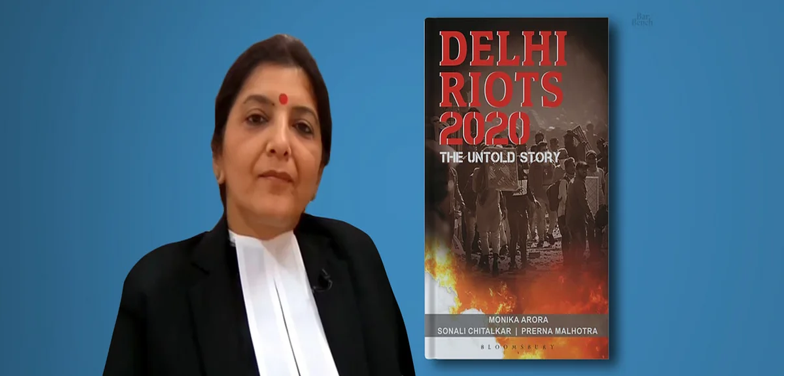
- In August 2020, a book named the “Delhi Riots 2020: The Untold Story” by advocate Monika Arora and academics Sonali Chitalkar and Prerna Malhotra was scheduled to be published by Bloomsbury India which however withdrew the book after facing criticism from some other opposing writers and activists.
Analysis
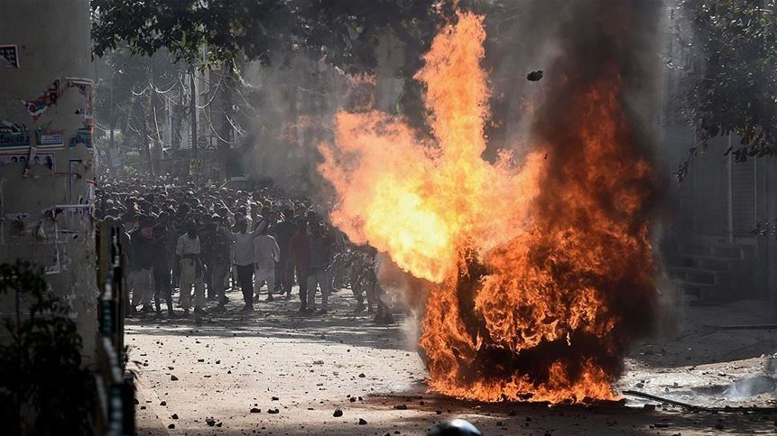
The aftermath of the riots resulted in many Muslims leaving with their belongings who had been earlier living in the riot-affected neighborhoods. Even in those areas of Delhi which were not affected by the communal violence, there also many Muslim families packed up their belongings to leave for their ancestral villages and showed no such intention of ever coming back.
As of October 2020, many Muslim survivors of the riots reported harassment and humiliation within their immediate neighborhood’s and many even started selling their properties below the market price as an escape from this ordeal. According to the complaints which were received by the lawyers who were representing the Muslim victims of the riots, the police had threatened to falsely implicate the victims in police cases if they raised their voice or tried to file any complaints against the rioters. Zafarul Islam Khan, the former chairman of the Delhi Minorities Commission around 1,300 Muslim youth were being arrested since the riots began and pressure has been constantly mounted on the Delhi police to create a fabricated narrative that these youths started the riots.
While on one side these things came to notice on the other hand the government also tried to give immediate relief to the needy ones as all those who were left homeless or who had run away from their homes out of fear, several temporary relief camps were set up in houses, temples, madrasas and the Al-Hind Hospital. Camps housing in larger numbers were erected in areas like Idgah, the Mustafabad prayer ground, and so on. In which the Idgah camp was the largest among the other nine such camps and was wholly funded by the government.
However, these camps soon grew crowded as there was a long list of the injured and helpless people who were affected due to the Delhi communal riot. Therefore, the volunteers helped the victims by distributing carts to vendors and providing others with legal aid or simple help in filling the application forms. During this time the doctors played an important role as they themselves volunteered to provide any medical attention to people suffering from any injuries as most of the refugees were reported to suffer from skin rashes and the common cold. Whereas many others, including children, were reported to be suffering from anxiety and mental trauma by seeing such violence in front of their eyes. As the children saw the death of their parents and relatives in front of their eyes. All the victims were just waiting for the government to help them rebuild their lives again as before.
Top 13 Interesting Facts About Delhi Riots 2020
Two Special Investigation Teams (SIT) were formed to investigate Delhi violence in which DCP Joy Tirkey and DCP Rajesh Deo were appointed as the head of these SITs.
There were 654 cases lodged by the Delhi police and 1,820 people were detained during the Riot.
The government provided compensation with immediate assistance of Rs 25,000 to the people whose houses were completely burnt.
The Delhi government gave a compensation of ₹1 crore to the family of head constable Ratan Lal who was killed in violence in northeast Delhi.
The CBSE Class 12 English exam was been postponed in the northeast and parts of east Delhi in view of the turbulent situation due to violence, The exam has been postponed at 73 centers in northeast Delhi and seven centers in east Delhi.
The Delhi police also shared contact numbers of police personnel who are at various hospitals for those desirous of seeking information on victims admitted during the communal violence in the northeast part of Delhi.
The apex court-appointed advocates Sanjay Hegde and Sadhana Ramachandran as interlocutors to speak to the protesters about shifting to an alternative site while observing that the road blockade by the protestors was depriving other citizens of their rights.
Neeraj Jadaun, a superintendent of police in neighboring Uttar Pradesh state, was hailed as a hero after he braved rioting mobs to save families during days of religious violence in the capital Delhi.
The Indian court granted bail to Safoora Zargar, who was arrested on charges of instigating riots that had triggered global outrage. The government initially which had opposed all her bail pleas so far, said that they would not oppose the plea this time on “humanitarian grounds”.
Mohinder and Inderjeet Singh were in highlights for hiding people in their homes before whisking them to a safe place during the violence, he said that he was just repaying a debt he owed after he himself was saved by people during riots in the city 35 years ago.
A number of illegal firearms (pistols, machine guns, country guns, and country bombs) were recovered from the rioters.
The rioters chose convenient places to gather, hide, deposit their weapons, stop the police, attack the surrounding Hindu areas, etc.
- The violence in Jaffrabad, Maujpur, Babarpur, Chand Bagh, Shiv Vihar, Bhajan Pura, Yamuna Vihar areas of northeast Delhi had claimed 53 lives and leftover 200 injured. A large number of properties had been damaged as frenzied mobs torched houses, shops, vehicles, a petrol pump, and pelted stones at locals and police personnel.
